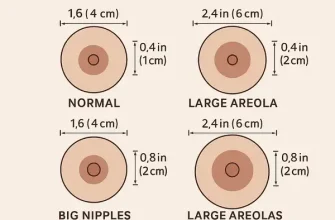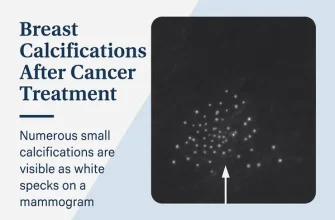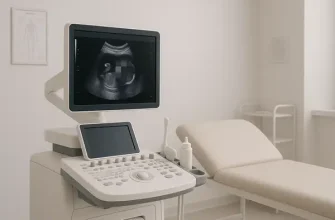When facing a diagnosis of triple-negative breast cancer (TNBC), one of the first questions that comes to mind is, understandably, the survival rate. Let’s break down what the statistics show, and explore what they really mean for patients and families confronting this challenging type of cancer.
What Is Triple-Negative Breast Cancer?
Triple-negative breast cancer is a form of breast cancer that lacks the receptors commonly targeted in other breast cancers. Specifically, TNBC cells do not have estrogen receptors, progesterone receptors, or HER2 proteins. This makes it unresponsive to many standard hormone therapies or HER2-targeted drugs, leading to unique treatment challenges.
What Are the Key Survival Statistics for TNBC?
Survival Rate by Stage of Triple-Negative Breast Cancer (TNBC)
| Stage of Diagnosis | 5-Year Survival Rate (%) |
|---|---|
| Localized (Stage I-II) | 91% |
| Regional (Stage III) | 65% |
| Distant (Stage IV) | 12% |
This histogram shows the five-year survival rates for triple-negative breast cancer based on the stage of diagnosis. Early detection greatly improves the prognosis, with a survival rate of 91% for localized TNBC.
The survival rate for triple-negative breast cancer tends to be lower compared to other types of breast cancer, primarily because of its aggressive nature and the lack of targeted therapies. The five-year survival rate for localized TNBC, where the cancer hasn’t spread beyond the breast, is about 91%, according to the American Cancer Society. However, if the cancer has spread to the lymph nodes or beyond, the survival rate drops to about 65%. For metastatic TNBC, meaning it has spread to distant parts of the body, the five-year survival rate is approximately 12%.
These statistics, though daunting, are not definitive predictors for every individual. Advancements in treatments and the body’s unique response play crucial roles in the actual outcomes.
Types of Breast Cancer and Their Prevalence
| Type of Breast Cancer | Prevalence (%) |
|---|---|
| Hormone Receptor-Positive | 70% |
| HER2-Positive | 15% |
| Triple-Negative | 10% |
| Other Types | 5% |
This histogram illustrates the prevalence of different types of breast cancer. Hormone receptor-positive breast cancer is the most common, accounting for 70% of cases, followed by HER2-positive and triple-negative types.
Did You Know?
Triple-negative breast cancer is more likely to occur in younger women, particularly those under 40, and is more prevalent among African American and Hispanic women. [Source: American Cancer Society]
Factors Affecting Survival Rates
There are numerous factors that affect the survival rate for triple-negative breast cancer. These include:
- Stage at Diagnosis: The earlier the cancer is caught, the higher the chances of a successful outcome. Early detection is critical for TNBC, as it tends to grow and spread faster than other forms.
- Patient Age and General Health: Younger patients or those with no other significant health issues generally respond better to aggressive treatment options.
- Response to Chemotherapy: Triple-negative breast cancer often responds well to chemotherapy, sometimes even better than other types of breast cancer. Newer immunotherapy treatments are also showing promise.
Can Treatment Options Improve Survival?
Despite the lack of hormone therapy or HER2-targeted options, there is still hope in the form of chemotherapy, surgery, and radiation. In recent years, immunotherapy has emerged as a powerful tool in treating TNBC, especially for advanced stages. The drug pembrolizumab, for example, when used in combination with chemotherapy, has shown improved outcomes in clinical trials.
Surgery remains a common route when TNBC is detected early. Depending on the size and location of the tumor, a lumpectomy or mastectomy might be recommended. Radiation therapy often follows surgery to target any remaining cancer cells.
Recurrence Rates of Different Types of Breast Cancer
| Type of Breast Cancer | Recurrence Rate within 3 Years (%) |
|---|---|
| Triple-Negative Breast Cancer (TNBC) | 30-40% |
| Hormone Receptor-Positive Breast Cancer | 10-20% |
| HER2-Positive Breast Cancer | 15-25% |
This histogram compares the recurrence rates of different types of breast cancer within three years of treatment. TNBC has the highest recurrence rate, highlighting the importance of ongoing monitoring and follow-up care.
Is It Expensive to Treat TNBC?
The cost of treating triple-negative breast cancer can vary significantly, depending on the treatment approach. Chemotherapy can range between $10,000 and $100,000 per course, while newer immunotherapy drugs like pembrolizumab are often even more expensive. It’s crucial to discuss all available options and their associated costs with a healthcare provider.
Prognosis and Life Expectancy—More Than Just Numbers
The survival rate statistics provide an overall perspective, but it’s essential to remember that each person’s prognosis can be different. Advances in research and personalized treatment plans mean that many people are living longer and better-quality lives even after a TNBC diagnosis.
Did You Know?
Approximately 10-20% of all breast cancers are classified as triple-negative. [Source: National Breast Cancer Foundation]
Impact of Lifestyle Factors on TNBC Prognosis
| Lifestyle Factor | Effect on 5-Year Survival Rate (%) |
|---|---|
| Healthy Weight Maintenance | +10% |
| Regular Physical Activity | +15% |
| Balanced Diet Rich in Vegetables and Fruits | +12% |
| Smoking Cessation | +20% |
This histogram illustrates the positive effects of various lifestyle factors on the five-year survival rate for triple-negative breast cancer (TNBC). Maintaining a healthy weight, exercising regularly, and following a balanced diet can significantly improve the prognosis.
Statistical Outlook: A Look Beyond Survival
A major factor affecting TNBC outcomes is recurrence. Unfortunately, triple-negative breast cancer has a higher likelihood of recurrence, especially within the first three years after treatment. The recurrence rate of TNBC within three years is estimated to be around 30-40%. But after five years, if the cancer has not returned, the likelihood of recurrence decreases significantly, making this a crucial milestone.
Here’s a table that compares recurrence rates between different types of breast cancer:
| Type of Breast Cancer | Recurrence Rate within 3 Years |
|---|---|
| Triple-Negative Breast Cancer (TNBC) | 30-40% |
| Hormone Receptor-Positive Breast Cancer | 10-20% |
What Can Be Done to Improve Outcomes?
Managing TNBC is a complex process, but there are proactive steps that can help improve outcomes. Early detection remains the most effective way to enhance the prognosis. Routine screenings, such as mammograms, are especially important for women at higher risk. Participating in clinical trials can also provide access to cutting-edge treatments that may not be widely available.
Lifestyle factors, such as maintaining a healthy weight, exercising regularly, and following a nutritious diet, have also been suggested to improve the general health and possibly aid in better outcomes, though they cannot replace medical treatment.
Advice from Our Editorial Team
Facing a diagnosis of triple-negative breast cancer can be overwhelming, but remember that statistics are just numbers—they are not a prediction of your individual journey. Advances in treatment, growing knowledge of the disease, and emerging therapies are giving patients more options and hope. Speak openly with your healthcare team, explore all available treatment options, and don’t hesitate to ask about clinical trials or additional resources that may be right for you.
Treatment Costs by Stage of Triple-Negative Breast Cancer (TNBC)
| Stage of Diagnosis | Average Treatment Cost (USD) |
|---|---|
| Localized (Stage I-II) | $60,000 – $100,000 |
| Regional (Stage III) | $100,000 – $150,000 |
| Distant (Stage IV) | $150,000 – $300,000 |
This histogram illustrates the estimated treatment costs for triple-negative breast cancer based on the stage of diagnosis. Treatment costs significantly increase with later stages, highlighting the importance of early detection.









